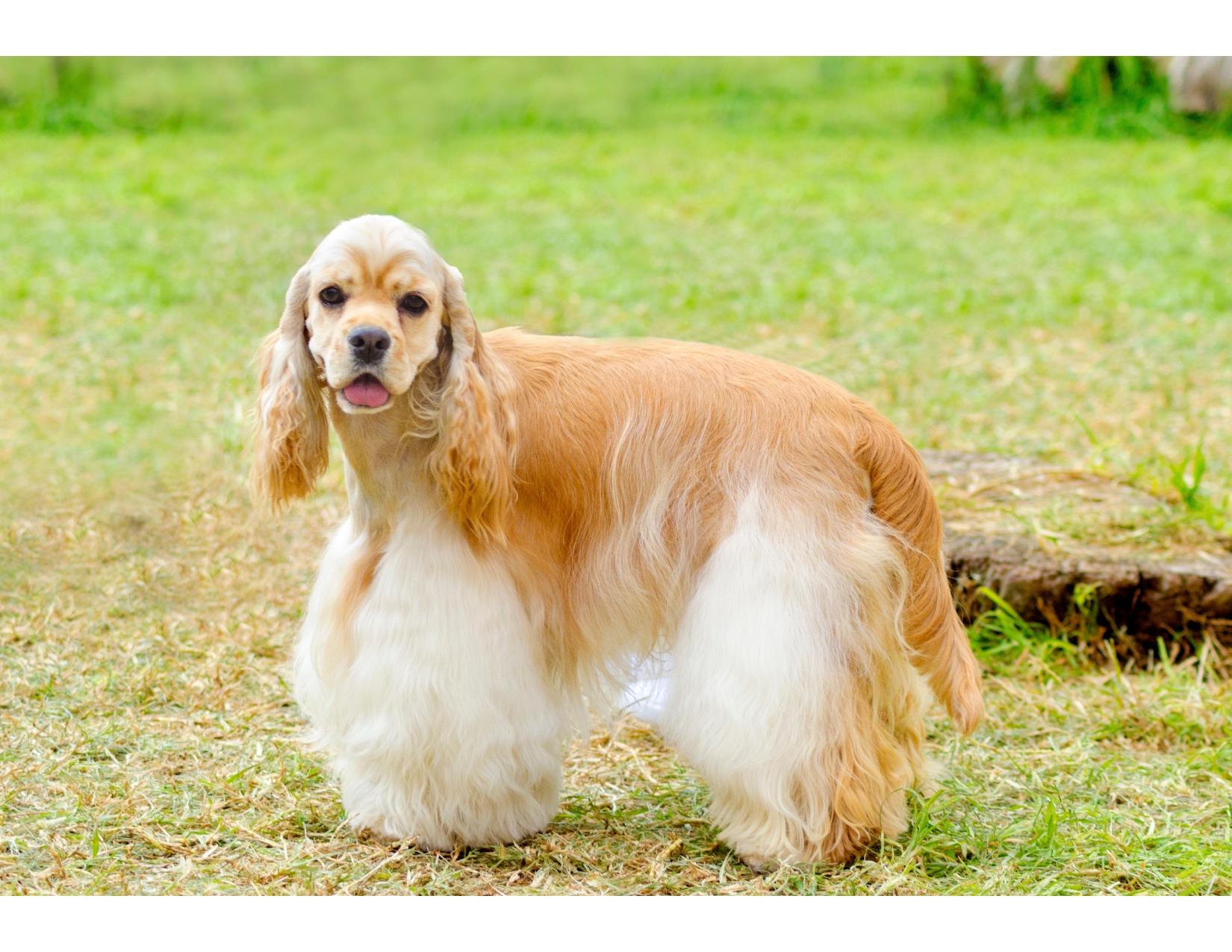COCKER SPANIEL
| Group: | Sporting |
|---|---|
| Size: | Medium |
| Temperament: | Smart, Joyful, and Kind |
| Height: | 14-15 inches (male), 13-14 inches (female) |
| Weight: | 11-14 Kg (male), 9-12 Kg (female) |
| Life Expectancy: | 12–15 years |
| Origin: | USA |
| Coat Length: | Long |
| Coat Type: | Double, Silky |
| Color: | Black Black & Tan Black & White Black White & Tan Brown Brown & White Brown White & Tan Buff Red Red & White Silver Brown & Tan Buff & White Brown Roan Brown Roan & Tan |
About
The joyful and carefree and one of the most popular breeds in the world is the cocker spaniel, known for his large, dreamy eyes and sly demeanour. There are enough hues and patterns available for everyone to enjoy the coat. These swift, tough gundogs have a balanced body that is sturdy and solid, and they walk with an easy gait. Cockers make eager playmates for children and are simple to teach for sports and companionship.
Nutrition
The diet of an American Cocker Spaniel should include high-quality, nutrient-dense foods that satisfy their nutritional requirements and promote general wellness. The food must be experimented with and is fully dependent on the particular dog. If your Cocker has any special sensitivities, see your veterinarian. Be sure to read the labels on your food, pick one of great quality, and give it a shot. A smart place to start your Cocker food testing is always with chicken and rice. To prevent unhealthful weight growth, take care not to overfeed your Cocker.
Ideal Meal Breakdown
Protein
35
Fat
22
Carbohydrates
35
Others
8
Exercise
The Cocker Spaniel is a sporting breed and should keep its muscles toned, but it is not a breed that requires a lot of exercise to get rid of its excess energy. Cockers frequently take pleasure in walking with their owners or retrieving a ball or other toy as a way to exercise. Walking is an excellent kind of exercise for them because they love being around their friends and family. If the Cocker has a canine friend, they can play together to get some exercise.
Grooming
Regular, thorough grooming is necessary for Cocker Spaniels. Missed sessions can cause the Cocker's coat to mat or tangle and are difficult to make up. It is essential to have a metal dog comb with fine and medium spacing for the teeth that is of professional quality. Avoid pulling through snarls; instead, pick them apart starting at the tips of the coat and then comb through. If you brush your ears too vigorously, you risk piercing the thin skin around the edges. The Cocker needs a thorough bath using premium dog shampoo. It is essential to thoroughly rinse after using soap because soap residue can irritate the skin. Use a blow dryer on a low heat setting to dry carefully. Recognize the right way to clean and dry the ear canals.
Training
The good news is that the Cocker Spaniel breed generally gets along well with people, which is helpful when training them. In general, they are sensitive and receptive to correction and a disapproving tone in their owner's voice because they want to please their people and want to be "good." Harsh methods of discipline are typically unnecessary and ineffective with the Cocker. The breed enjoys the challenge of performance activities, so it is a good idea to try out the various activities to determine which ones your particular Cocker will find interesting and then devote training time to those activities. It is advised to take puppy training classes as well as early socialisation. Food rewards, play, and praise all work well to motivate cockers.
Health
add to their attractiveness, they might also be a health risk. Ask your veterinarian how often to clean the ear canals of your Cocker. To prevent matting and infections, keep their coats tidy and groomed. Hip, patella, and eye diseases are a few problems that Cockers are prone to.
History
Due to the close relationship between the words "Spain" and "spaniel," it is thought that the spaniel breed type originated in Spain. Since the days before the invention of the rifle, when hunting dogs were used in tandem with nets, spaniels have been a helpful tool for bird hunters. European and British spaniels have historically been divided into two informal categories: land spaniels and water spaniels. The various spaniels, however, were categorised as distinct breeds by the 19th century, when written breed standards, dog shows and field trials, and the idea of purebred dogs in general began to gain traction in England. The Cocker, so named because they focused on woodcock, was one of them. These dogs were the forerunners of the modern Cocker Spaniel; they were larger than English Toy Spaniels but smaller than English Springer Spaniels. The Cocker Spaniel split into two varieties in America: American and English. The English were said to be taller and have longer heads than their American cousins, as well as a less lavish coat. Cockers were originally bred as hunting dogs, but they later became well-known as all-purpose companions.
